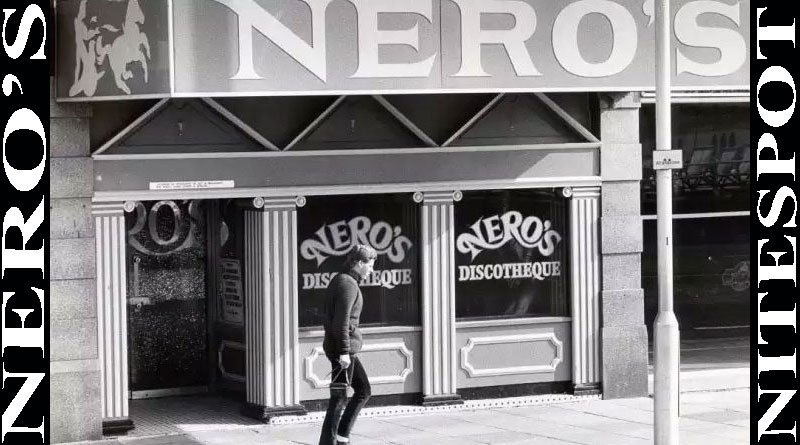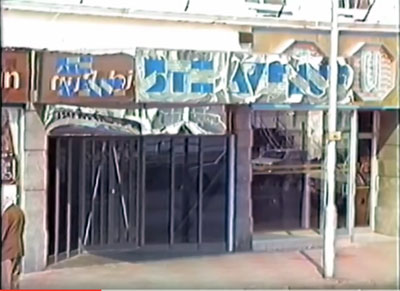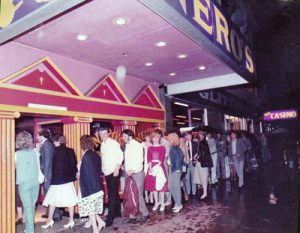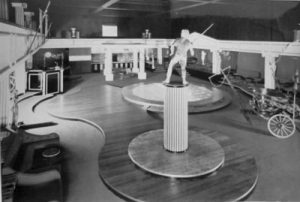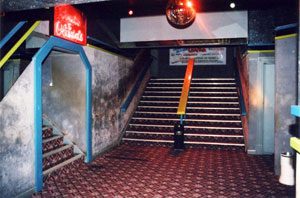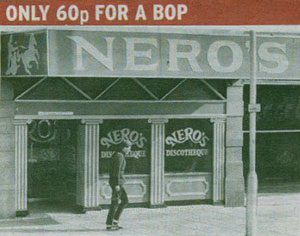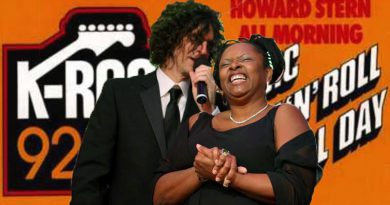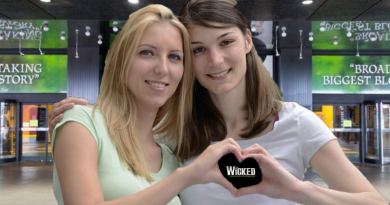Obituary For The 5th Avenue Nightclub (Formerly Savoy Ballroom, Nero’s Nitespot and Time) in Portsmouth UK
In the mid-1980’s New York had Studio 54, London had the Hippodrome and even Manchester had The Haçienda. But Portsmouth, well Portsmouth had…. 5th Avenue.
Located on the Southsea seafront, a small geographic area of Portsmouth City and opposite-adjacent to the infamous South Parade Pier, the building had many nightclub names over the years where each generation experienced the venue in different ways.
It all started with The Savoy Ballroom in 1926 with tea dances and gentlemen’s ‘excuse me’. It was unused during the WWII years, but then morphed into a popular band and concert hall in the 1950’s and 60’s under the same brand name. During this time it hosted many top bands including The Beatles, The Rolling Stones and The Who. In 1971 it took on a new form when the now-dilapidated building was taken over by the upstart Pleasurama Ltd, and their new vision brought Nero’s Nitespot to an unsuspecting audience. After a highly successful 12 year run, the club changed into 5th Avenue in 1983 where it then also had a good ten year stint and also added a sister club Images, which was next door. Then it entered its final form as Time with its sister club Envy in 1994. The moniker Time and Envy stuck and both clubs then became known as the collective name. In 2007 Time and Envy was closed and the building was then left vacant.
The building’s destiny was secured when the acquisition of the site by soccer impresario Harry Redknapp in 2008 was approved. Redknapp allowed the building to sit idle for a few years and then, after a highly suspicious fire in 2011, the site was approved for demolition. The site was then leveled and construction of new flats in 2015 put a hard stop on the history-timeline of this uber-famous music venue in Southsea that had seen so many people grace its famous doorway. If it had not been for Redknapp’s’ involvement, the famous site may have been redeveloped yet again, into its next chapter of night time entertainment.
Pleasurama Site Went From Entertainment Complex To Musical Icon
The building had long been the epicenter of local musical entertainment in Portsmouth for a span of over eighty years. Under the ownership of Pleasurama, which started in 1971, the site became more than just an entertainment complex, it was an musical icon for so many generations, each embracing it for it’s reflection of the popular music culture of the time.
Without a proper eulogy at its fiery funeral, the obituary for Neros, 5th Avenue, Images, Savoy Ballroom and Time and Envy has long been overdue. Even its local poor cousins Joanna’s, Honky Tonk Bar, Peggy Sues, Fanshawe’s and even Hoddy’s, should get a special mention. Harry Lime’s was never in contention.
After the whole block where the building stood was razed to the ground and 92 cookie-cutter senior citizen flats were built in its place, the story of this musical venue may have become relegated to the history books and locals’ fading memories, but there still remained a spirit of its past. The new flat construction was aptly named The Savoy Court, a throwback to its former palm-court glory days, but many believed that the new senior living development lacked the gravitas to use the original club name, even if the ghosts of the bygone nightclub days did continue to haunt it.
What made the various versions of the club special was that everyone’s experience was different. My experience of Neros and Fifth Avenue was first hand and cold. I still had a dog in this fight that has long been lost to a bunch of new elderly tenants who prefer the smell of mothballs and nonenal to that of Brut, Hai Karate and Charlie Girl.
Eighty Years of Entertainment – 5th Avenue Through The Ages
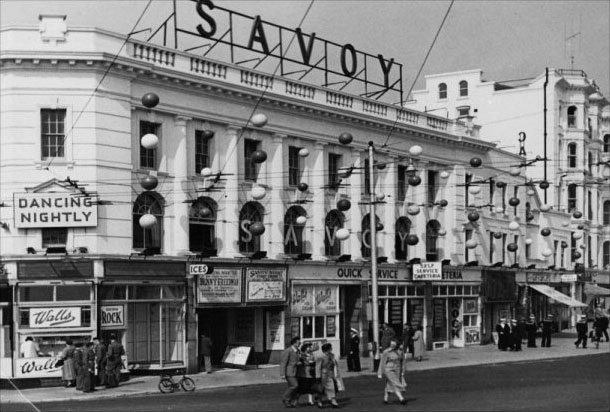
Obviously, 5th Avenue was not always 5th Avenue. It started life in 1926 as the Savoy Ballroom, where it first had old-time musical style entertainment, usually during the day and featuring the tea dances of The Palm Court Orchestra. The venue was empty over the war years, primarily as the Germans were bombing the hell out of Portsmouth, and the Southsea area was a common bomb drop-spot. These German bombers often missed their target at the former Naval site at the Portsmouth Dockyard and could not return home with any bombs due to their excess weight. They would drop their deadly cargo on any light they could find and the residential areas of Southsea became a popular target. The building was unused and undamaged during the war years and the club site remained virtually unscathed and survived to be reinvented in the 1960’s. As musical tastes changed, The Savoy morphed into a band venue in the 1950’s and 1960’s where it featured top acts of the day including the precursor band to The Rolling Stones, called The Blue Boys, in 1959. The Beatles then played there in 1963 and The Who did a three night gig there in 1965. Even bands like The Animals and The Yardbirds made a few appearances at the venue. With those bands eventually going to the bigger venues around Portsmouth, The Savoy Ballroom then fell into disrepair and became largely unused.
Pleasurama Had A Vision For Something New
In 1971 the Pleasurama group came along and created the concept of Nero’s Nitespot and chose the Savoy Ballroom to be the site for its vision. The club theme was a 1970’s disco with its Romanesque wild and fun ethos that reinvigorated the tattered building. 5th Avenue followed in 1982 to usher in the changing sound of the 80’s musical doctrine and in 1988 a sister club Images was created from some adjacent raw space next to 5th Avenue, with a short internal staircase connecting the two. This change meant that 5th Avenue could now contain over 3000 people nightly. In 1991 the venue became the last and final name that it would own, Time and its sister club, now called Envy. The venue finally closed its doors as an operating club in April 2007 amid plans to redevelop the site.
This nightclub was located on the bustling Southsea seafront that, over the years, and the various clubs it was known as, saw a parade of many of Britain’s best trends including teddy boys, greasers, mods, rockers, punks, dressers and boy racers to name but a few.
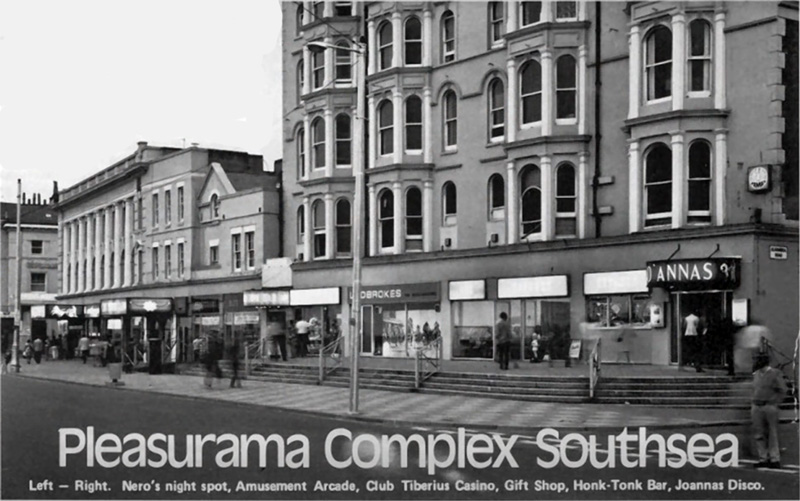
1971. The Savoy Ballroom Turns Into Nero’s
Not that anyone cares now, but, back in the day, the Savoy Ballroom really was the focal point of live musical entertainment in Portsmouth. There are countless stories of many a Portsmouth couple meeting there during its big band days and it was an especially popular spot with local girls trying to meet American sailors. When The Beatles played there for three nights in 1963 as part of the She Loves You tour, people expected this venue to last forever. But just like The Cavern Club in Liverpool in the late 1960’s, the musical following grew smaller as the good bands started passing instead of playing, mostly due to the venue’s small size and limited door revenue which meant their appearance may not make them any money. In 1971, long after The Beatles had left the building and well past the glory days of the old-world crowd of afternoon tea and dancing to the Palm Court Orchestra, the venue changed to its next incarnation and the Nero’s Nightspot was born.
After picking up the dilapidated Savoy buildings for a song, which included The Savoy Ballroom, at just Five Thousand British Pounds, the new owners, Pleasurama, decided to turn the venue into a modern nightclub using a roman theme of extravagance and whimsy. Out with the marble floors, crystal chandeliers and tea dresses of the old Savoy and in with the 1970’s flares and kipper ties. They boarded up all the gorgeous floor-to-ceiling seafront vista windows, gutted the inside of the venue, put in a 2nd floor and installed a new gaudy front entrance with a huge overhang and the new 1971 discotheque, Nero’s, was born.
Pleasurama turned the rest of the dilapidated block into an amusement arcade, Club Tiberius Casino, a gift shop, The Honky-Tonk Bar and Joanna’s Disco.
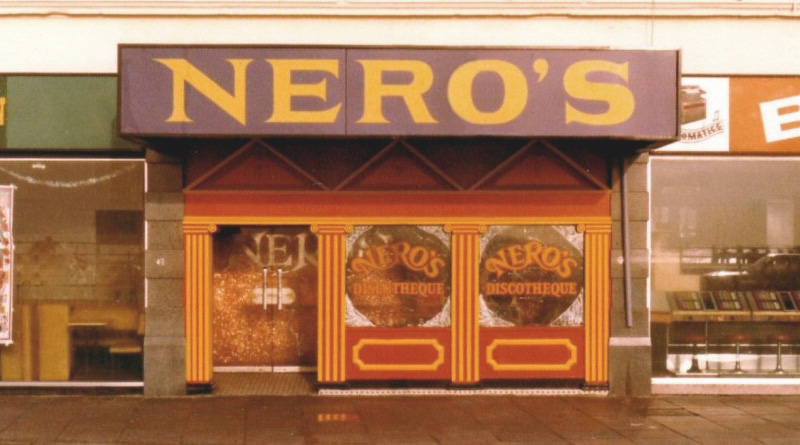
The Inspiration For The Nero’s Experiment
Nero’s full name was actually Nero’s Nite Spot and it came as a total shock to the City of Portsmouth as this new club looked like the owners had gone to Studio 54 in New York City, snorted all the cocaine they could lay their hands on and then tried to duplicate the whole NYC experience right back here in Portsmouth.
The only problem with that fanciful story is that Nero’s actually predated all of the world famous clubs of this ilk. Surprisingly, it wasn’t until 1977 that Steve Rubell and Ian Schrager created Studio 54 in NYC, 1973’s CBGB’s had a completely different vibe and London’s Ronnie Scott’s and The Marquee Club looked positively pedestrian in 1971 when compared to Nero’s. The only similar club templates that existed in 1971, were the tiny gay underground clubs in NYC like The Loft, Tenth Floor and 12 West. These clubs had blossomed from the music being played (and mixed) by the pioneer DJ, David Mancuso, who rose to fame in the early 1970s. But Nero’s didn’t look or feel anything like those clubs. It was its own breed, a new genre and it was ahead of its time. I am going out on a limb to say it was one of the first nightclubs in the world and certainly the very first discotheque in the UK.
Historians may note that The Arthur discotheque in Midtown Manhattan, NY may have opened in 1965 on the site of the old El Morocco nightclub, but that club was tiny compared to Nero’, Arthur was still playing live Swing music as disco music had yet to be invented and even DJ’s did not exist. On day one of Nero’s they a DJ booth, though they called it by another name.
Many say that Nero’s was actually inspired by the famous Romanesque porn movie of the time, Caligula’s Hot Nights, but that movie did not come out until late 1977. It is a bold statement to say that Nero’s was the first of its kind, but the closer you look, the more it appears that it really did break new ground way back in the heady days of 1971, capturing the peace and love music genre of its time and turning it on its head. You have to remember, the opening of Nero’s was only two years after Woodstock had taken place in Bethel, New York, back in the halcyon days of Summer of 1969. The music culture looked very different then and Nero’s was something different, very different.
What Did Nero’s Look Like?
Inside the newly constructed Nero’s there was a multi-level, under-lit dance floor, straight out out of Saturday Night Fever (but long before Saturday Night Fever even existed as a movie, with a production date of 1977). Gone were the romantic and panoramic sea views across the Solent of the Savoy Ballroom – through the giant floor-to-ceiling windows, they were replaced with black walls, spinning colored spotlights and a huge mirrored disco ball. Even a fog machine was installed and they did not realize it how much of a cliche that would eventually become.
Wall to wall carpeting in shades of purple and gold were adorned with golden statues of naked women that topped off this 1970’s Romanesque, hippie-inspired wet dream of a nightclub, something that Portsmouth, or even the country had ever seen before. When it opened, Dave Anson, (who would later go on to manage the club) would take on the nom-de-guerre of Steve Rubell, from Studio 54 ilk, and Nero’s would often turn away many more people than they allowed in, each and every night. Nero’s Nite Spot became the hit of the city and thus began the late night shenanigans for club goers and living hell for the local Southsea seafront residents that lived nearby. These residents would now be subjected to late-night rowdiness for years to come, which included fights, theft, criminal damage, people throwing up in the street and even romantic couples having sex in any available dark doorways or alleyways. Nero’s was a hit, but not everyone in Southsea was happy.
Luck Gets A Pimply Teenager Into Nero’s
You cannot write about Nero’s if you did not experience it first hand and I was lucky enough to actually see it that way. At fifteen years old, and on a bleak Saturday night during the cold winter of 1981, I managed to get into Nero’s. Sure, they had teen nights and school/college rentals of this club (where they did not serve alcohol and the experience was very sub-par), but my one and only full-on experience of full-tilt Nero’s was on an over eighteen Saturday night, late in 1981, long past its heyday as the top club in Portsmouth, but the experience was still a memorable one. By that time there were many other copycat clubs around town, like Martines in Guildhall Walk and Ritzys in Arundel Street. There was even The Some Place Else Club in Palmerston Road, but they were all cheap copies of the Nero’s phenomenon. I managed to convince the Nero’s doorman to let me in by name-dropping a former bouncer who I knew had been fired a week earlier. Actually, he was still a tenant in my mum’s bed and breakfast and he had suggested I give it a try if I wanted to get in that badly. The doorman parlayed their pity for him onto me and was in. It is important to note that when I was fifteen years old, I looked like I was ten, so this was something of a feat. Bear in mind, it’s just me in Nero’s. I mean, on that night, I do not not know anyone else inside Nero’s, so I am not quite sure what I was thinking. I did not have any friends at the time who were willing to go up against the notoriously tough Nero’s bouncers, just to suffer the embarrassment of being turned away.
Girls had it so much easier back then. I knew of so many thirteen year old girls at school who would get dressed up and had no problems getting in to the club on an over-18 night. So many girls in fact got through the front door that its still quite disconcerting just how crazy those times were. I think at that time, there was a lot of underage sex happening inside the club, but in those times no-one seemed to care.
One should note that I was not having sex at Nero’s (nor anywhere else) as no self respecting Pompey girl was going to sleep with this clueless man-child who is clearly out of his depth and possibly his mind.
Nero’s Provided Some Great Memories
Older people often talk about how great the good old days were and they wax lyrical about just how wonderful everyone and everything was back then. It is part of the human condition to just remember the good times and pale the bad memories until they become more palatable. More often than not, the more time that has passed, the rosier memories often become.
Fortunately I was pretty objective when I visited Nero’s that one time. I had just managed to skate in on the tail end of Nero’s final act, so I was fortunate to get a glimpse of something bigger than I had anticipated and I am grateful to having seen and experienced it. That one-time experience cemented in so many facets of the club, that despite the time that has passed, I still remember everything. Nero’s really was something quite special in its day and I imagine only a few remember it so clearly.
In researching this story I was amazed to see that a few people still have their own stories, pictures and experiences of their time at the club. The same could not be said for the other versions of the club that existed in that space during other times, specifically 5th Avenue and Time. It is probably not fair to lump the original Savoy into that that mix as most people who experienced it are all probably dead now or probably have dementia.
A great Nero’s and 5th Avenue Nightclub photo resource can be found here.
Entering Nero’s Through The Front Door
Most people arriving at this club had already been to a few pubs prior to warm up, but anyone who was sober enough to remember, will recollect the unique experience of walking into Nero’s.
The wide double glass front doors brought you into the entrance lobby, which was adorned with red glitter wallpaper that moved in the breeze and black carpet and ceiling. Then past the bouncers formally dressed in their jackets and bow ties, but not lacking the muscle to deny or eject any drunken miscreants looking for trouble. The cashier was located on the right and then the main lobby with the disco ball. Past the cloakroom on the left, up the first flight of stairs, with the phone booth on the right and then taking the final left turn and walking up the final flight stairs and at the top of the stairs finally into Nero’s.
The very first time you walked in it was almost like being born into someone else’s nightmare. It could often be a sensory overload to new attendees, but the design was engineered to cut through the drunken state that many people already found themselves in when they arrived at the club.
The smell, the colors, the lights and the taste, yes the taste. Nero’s had everything to offer. This club with four bars and two dance floors could hold up to 2,000 people a night and seared a strong memory it into my young and somewhat impressionable brain. It was as if the scene had been plucked directly from a roman emperors private quarters, all the things you thought people did in a nightclub, but never actually saw, until now. You half expected Caligula to welcome you to his fantasy land, which is really what it was.
Let me set the scene for you with a little more specificity. When you walked into the club, there were barely-clothed dancers gyrating on golden plinths, young girls making out with older men in the dark corners of the club, with their ham-hands fiddling up their satin skirts, mouthing unheard utterances below the disco-din of music and the babbling brook of the excited crowd. Other men were lying prostrate on the velvet carpet podiums, in trance-like gazes from drugs, sex or just enjoying the music provided by the knock-off London DJ’s who were too busy spinning all the 50 pence hit 7″ singles that they could find in W.H. Smith. The DJ’s were also too busy spinning vinyl to see the gaggle of loose single girls gathered at their booth ready and willing to satisfy their carnal desires just to hear the latest tune. These men were the modern day disco gods and the girls were only too happy to often provide their sordid offerings as gifts. You ignored the sweet smell in the air and the unexplained stickiness of the deep-pile plush purple carpet and continued on to see the next unseen sight, like some naive rubber-necker, trolling past a burning car wreck of inequity. Towards the end of the evening, the dark grey marble counter in the ladies bathroom was both damp and snow-white due to the fine mist of nose candy that had been consumed upon it.
People from all walks of life filled the dance floor and the music, drugs and alcohol fueled the party until the early morning, when the club’s harsh incandescent lights finally replaced the glowing neon hues, forcing the party throng to spill out onto the lonely street with its momentum temporarily unabridged, despite the threat of the miserable damp cold of the English reality that hits them in the face like a thousand hypodermic needles.
This was a scene that hipsters of the day must have experienced nightly and it would be my first and last experience of 1970’s disco style Nero’s nightclub, as the club it shuttered its doors in the late Summer of 1982, before I even reached the legal drinking age of eighteen. In early 1983, 5th Avenue was born and that’s when the club entered a new chapter in its storied history.
Nero’s Was Never A Discotheque, Despite The Promotions
In 1971, Nero’s started out as Nero’s Nitespot. The term “disco” never featured in their original name when they first opened in 1971, as the genre had yet to be invented. In between times the club did adopt the moniker of Nero’s Nightclub in 1974, but none of the second names stuck around for long.”Disco” did finally find its way into its promotional flyers and tee shirts in 1975 and then on to their glass front entrance doors in 1977.
When Was Disco Invented?
The term Disco wasn’t coined in the musical industry until late 1974 and it didn’t take off as a musical genre until later in 1975. Conversely, Nero’s opened its doors in 1971, so what style of music was the club playing prior to the steady “four-on-the-floor” beat of disco? Guitar rock and ballads seem out of place in the Nero’s I remember, but they must have been playing something good to entertain the crowd. When the musical genre of disco finally went into decline in 1980, Nero’s had already hitched its wagon to the genre a little too strongly, even though the club did not start out that way back in ’71.
The Disco Genre Dies and Takes Nero’s Down With It
The disco genre did not last long. By 1977, and the release of the movie Saturday Night Fever, the genre was already on a fast decline. With the advent of the Disco Sucks movement in 1980, Nero’s had suffered greatly in ticket sales and the club began losing money for the first time in its history. It also didn’t help that there were now a litany of other knockoff nightclubs all over Portsmouth. Pleasurama management believed that the only way to survive was to finally uncouple their bond with disco, gut the venue and start with a fresh brand and relaunch to the masses. It took them to 1982 before they finally pulled the plug.
They may have thrown the baby out with the bath water by ditching the Nero’s model that had served them very well for over ten years, but it was clearly time to move on. Those twenty year old’s were all now thirty and changing diapers on their newborns and Neros did not fit the bill of the new electronic eighty’s.
Although Pleasurama would achieve decent success with 5th Avenue and Time and Envy, they would never recapture the amazing success of Nero’s again. A lot of its history and success is now lost to time and fading memories.
It might have only been 60 pence for a bop back in its heyday, but by 1980 its former customers were now paying for mortgages and could only go to Nero’s if they climbed out of their bathroom window without their sleeping wife realizing. That’s a call out to you Mark Abazar.
1983. Nero’s Turns Into 5th Avenue
1994. 5th Avenue Turns Into Time and Envy
Writers Note:
I am looking for additional photos and experiences from anyone kind enough to share them. If you remember The Savoy Ballroom, Nero’s or 5th Avenue, please do not hesitate to get into contact with me.
